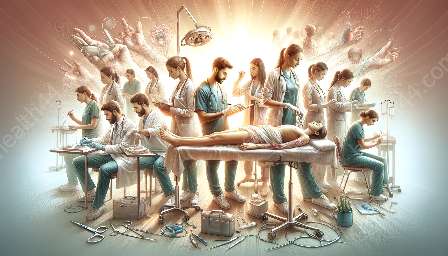Physical therapy plays a crucial role in restoring, maintaining, and promoting overall fitness and health. This comprehensive guide explores various physical therapy techniques and their relevance to clinical skills training and health education.
1. Introduction to Physical Therapy Techniques
Physical therapy involves the use of therapeutic exercises and modalities to help individuals recover from injuries, manage pain, and improve overall physical function. The techniques used in physical therapy are designed to address a wide range of musculoskeletal, neurological, and cardiopulmonary conditions.
2. Importance of Clinical Skills Training in Physical Therapy
Clinical skills training is essential for physical therapists to develop proficiency in applying various therapeutic techniques. It enables them to assess, diagnose, and treat different conditions effectively. Through clinical skills training, physical therapists learn how to tailor their approach to each patient's unique needs, ensuring optimal outcomes.
3. Applicability of Physical Therapy Techniques in Health Education
Health education is an integral part of physical therapy, as it empowers individuals to manage their conditions and adopt healthy lifestyles. By understanding various physical therapy techniques, individuals can actively participate in their rehabilitation process and make informed decisions about their health.
4. Common Physical Therapy Techniques
There are several notable techniques used in physical therapy, each serving specific purposes. Some of the common physical therapy techniques include:
- Therapeutic Exercises
- Manual Therapy
- Electrotherapy
- Hydrotherapy
- Heat and Cold Therapy
4.1 Therapeutic Exercises
Therapeutic exercises are tailored to address individual impairments, improve strength, flexibility, and endurance, and enhance overall functional abilities. They are designed to promote tissue healing and improve mobility.
4.2 Manual Therapy
Manual therapy involves hands-on techniques such as joint manipulation, mobilization, and soft tissue mobilization to reduce pain, restore normal joint mechanics, and improve tissue extensibility.
4.3 Electrotherapy
Electrotherapy uses electrical stimulation to manage pain, improve muscle function, and promote tissue healing. It includes modalities such as TENS (transcutaneous electrical nerve stimulation) and ultrasound therapy.
4.4 Hydrotherapy
Hydrotherapy involves the use of water for therapeutic purposes, providing buoyancy and resistance to facilitate exercises and promote functional gains in a low-impact environment.
4.5 Heat and Cold Therapy
Heat and cold therapy are used to manage pain, reduce inflammation, improve circulation, and promote tissue healing. Heat therapy includes the use of hot packs and warm whirlpools, while cold therapy involves ice packs and cold compresses.
5. Advanced Techniques in Physical Therapy
In addition to the common techniques, there are advanced methods that physical therapists may employ based on the patient's condition and treatment goals. These may include:
- Neuromuscular Reeducation
- Functional Electrical Stimulation
- Kinesio Taping
- Balance and Proprioceptive Training
- Cardiopulmonary Rehabilitation
6. Integrating Physical Therapy Techniques with Collaborative Care
Physical therapists often work collaboratively with other healthcare professionals to ensure comprehensive patient care. By integrating physical therapy techniques with other modalities, such as occupational therapy, speech therapy, and chiropractic care, a more holistic approach to rehabilitation can be achieved.
7. Role of Education and Training in Effective Implementation
Education and training play a pivotal role in equipping physical therapists with the necessary knowledge and skills to implement diverse physical therapy techniques. Continued professional development and up-to-date training ensure that physical therapists can deliver evidence-based, high-quality care to their patients.
8. Conclusion
Physical therapy techniques form the cornerstone of effective rehabilitation and pain management. By understanding their significance in clinical skills training and health education, both healthcare professionals and patients can appreciate their role in promoting overall well-being and functional independence.



